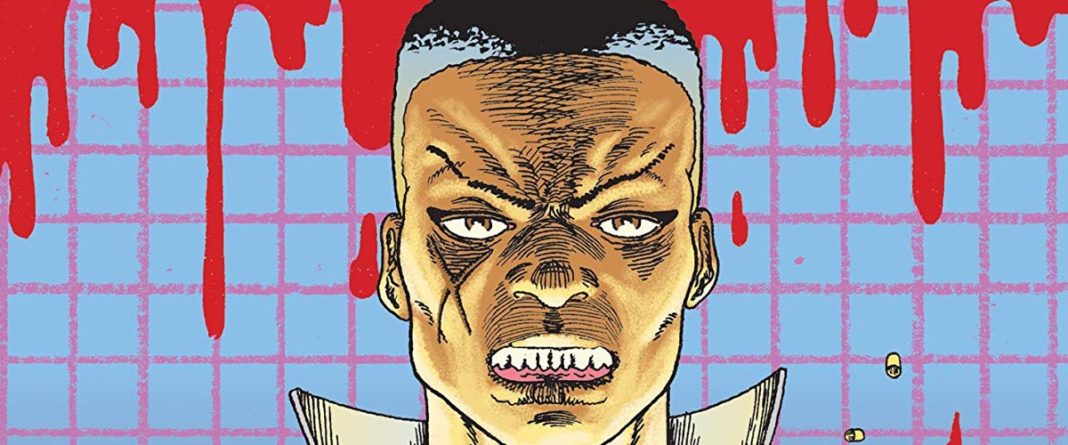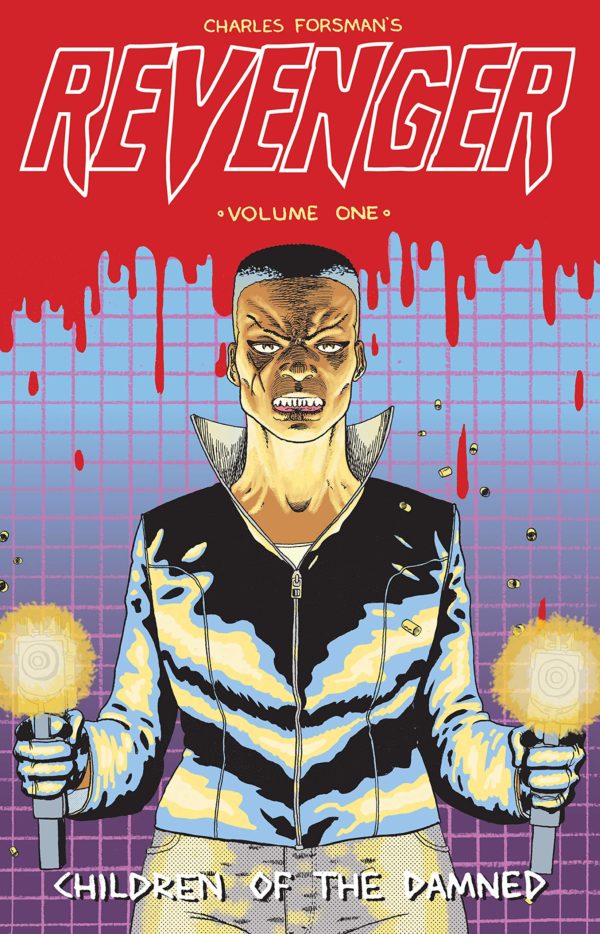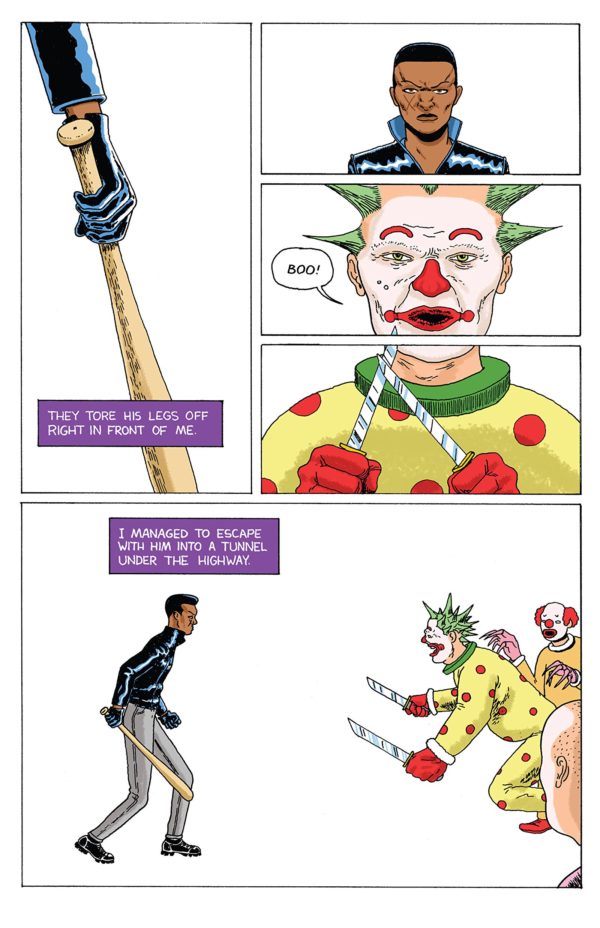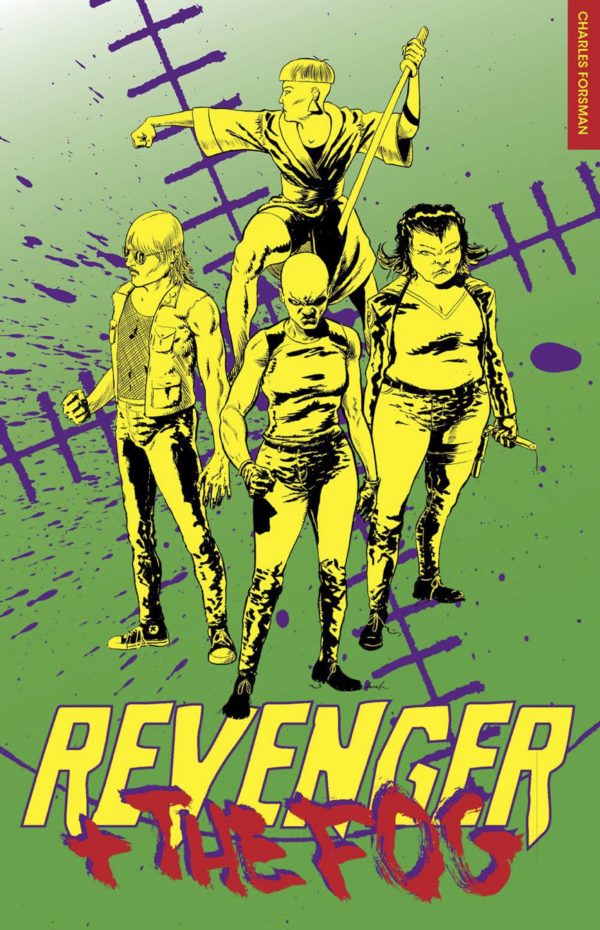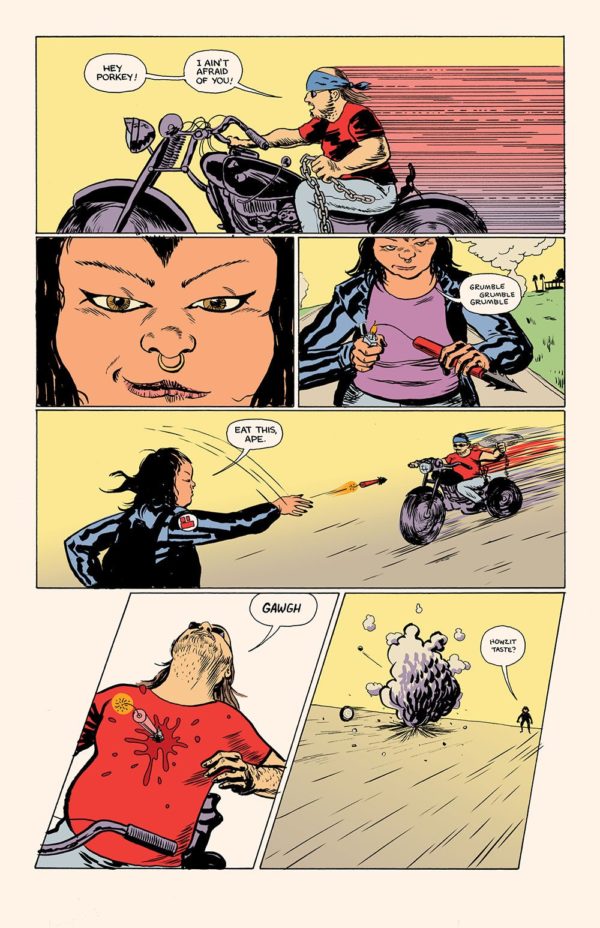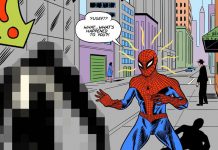Revenger: Children of the Damned and Revenger and the Fog
By Charles Forsman
Bergen Street Comics
After his bio at the end of the first Revenger book, Charles Forsman dedicates Revenger: Children of the Damned to “anyone who has ever been stepped on,” which stands as a perfect succinct explanation for the comic. For anyone who has ever read Forsman’s fraught dramas about troubled teens in dysfunctional situations like The End of the Fucking World, Celebrated Summer, or I Am Not Okay With This, the free-for-all of violence and sometimes glib presentation of it that is Revenger might be kind of odd. But that one sentence places the works in context. Revenger stories are fantasy, definitely — and because of the name given to Forsman’s street-level superhero, these are unashamedly “revenge fantasies” and that’s partly what’s so fascinating about them. Revenge is presented as a valid response to abuse.
The first book, Revenger: Children of the Damned has his one-woman army being called by the desperate boyfriend of a missing girl. Revenger discovers where she is and enacts retribution — alongside rescue — with an army of derelicts in an adventure that unfolds with deadpan humor and subtly absurd moments punctuated by Revenger’s focus on killing anything and everything that strikes her as part of the problem. This includes criminal masterminds and henchmen, but also police — she may be interested in justice, but the law is a fuzzier area.
That may be because of her origin story, which is only partially related in flashbacks that offer little in narrative terms but much in emotional relevance to the caper that is unfolding in the book. The story takes place in 1987, the latter days of Regan’s America — at least, with Reagan actually in office — and Forsman focuses on the empty, hopeless shadow world that coexisted with the fantasy that Reaganites painted of the country. As the enforcer for the shadow people, Revenger’s actions reflect a rage that puts oppression to a permanent end, one oppressor at a time and with some levity reminiscent of exploitation films.
In Revenger and the Fog, the story takes us back to 1979 when Revenger is operating with three other folks taking out bikers and returning neighborhoods to the frightened residents, and then long before on a tour de ‘70s that reveals how the four hooked-up and give some context to the first Revenger book.
Most of the adventure is wrapped up in the story of Jenny, a.k.a. Dynarat, who’s creepy, abusive father is an all-powerful Hollywood mogul hell-bent on turning his daughter into a star under his control. But Jenny has escaped him and is living her own life of action with her friends until her father reenters her life and Revenger has to spring into bloody action. The book concludes with a shorter adventure that has Revenger dealing with some deadly, demented hillbillies that have a zombie vibe to them.
There is a precedence for violent revenge epics during the time period Forsman evokes in these books, from the Death Wish movies to The Punisher and everything in between. What makes this different is is the attitude, obviously, but also the placement of a black woman in the role of the agent of violent vengeance. Bronson and any others who took on the role only continued that a white male is the only one equipped for such a job, but Revenger displaces that stereotype quickly.
And in context of Forsman’s other work, the objects of Revenger’s concerns, the people she’s shown seeking vengeance for are the very kids that stand at the center of Forsman’s other comics — teenagers making bad choices as the run from the misfortunes of their horrible lives. Revenger is like a boogeymen that any of those characters might have dreamed up to even the odds in life against everything that’s stacked against them and everyone who personally contributed to their pain.
I can’t say that Forsman’s Revenger books are going to be to everyone’s taste, but I can say that Forsman’s portrayal of the pure rage created by bullying and institutional victimizing of people is cathartic, and also sometimes manages to cut the tension in being so over-the-top, like someone who screams along with you and then makes a joke about it to bring you back to earth. It’s a compassionate work even as it’s a bloody one.


